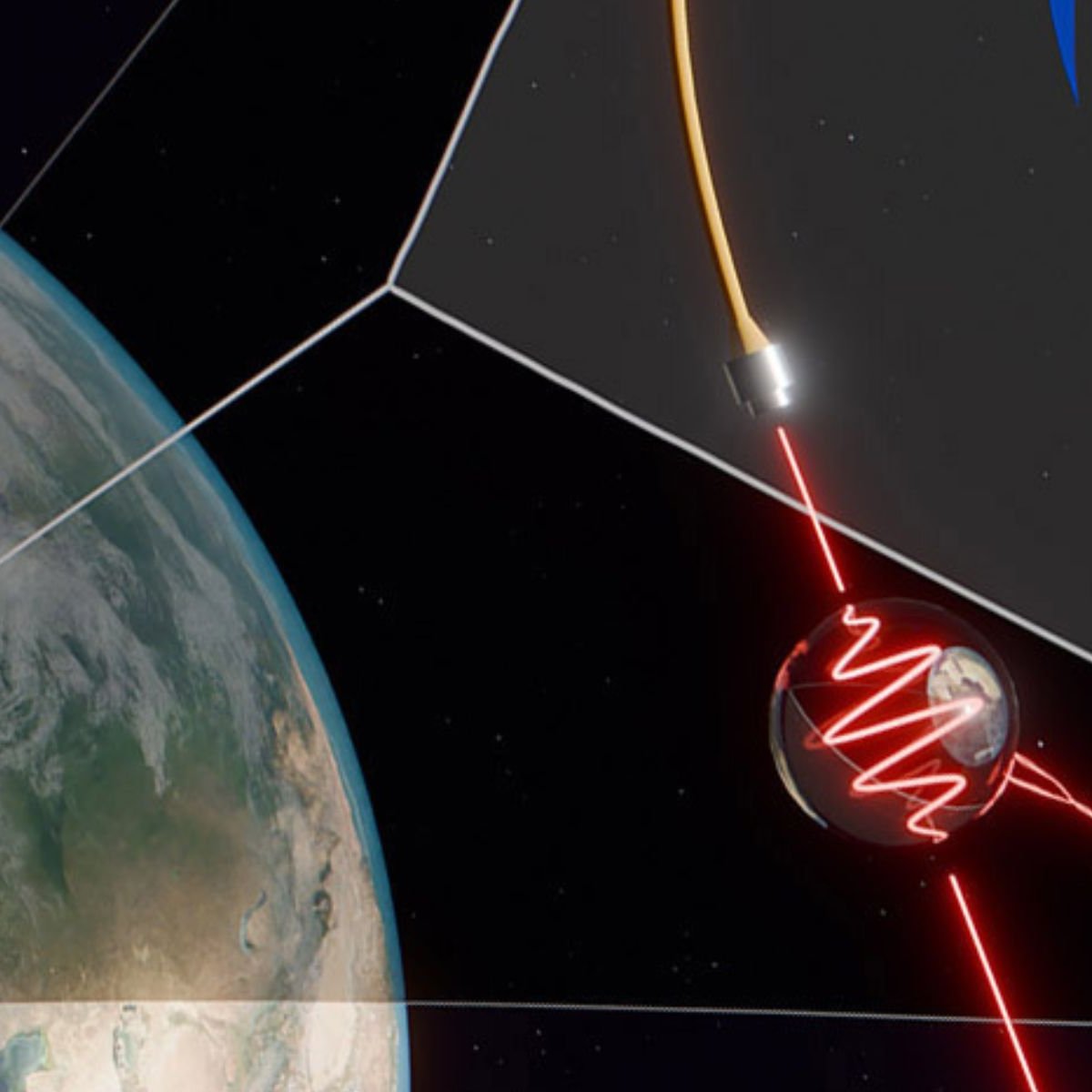A team of researchers from the University of Vienna made history by making measurements for the first time. “The effect of the Earth’s rotation on quantum entangled photons”. Their study, “Experimental observation of Earth’s rotation by quantum entanglement,” recently published in the journal Science Advances, is pioneering in demonstrating the interplay between quantum and relativistic effects.
This means the team was able to observe how the Earth’s rotation affects the behavior of entangled quantum particles, in this case light particles (photons). In the experiment, they used a version of the Sagnac interferometer, an optical device invented in 1913 to measure rotations and angular velocities with great precision.
Created by French physicist Georges Sagnac, its accuracy in measuring rotational speeds is unrivaled. but limited to the limits of classical physics. To overcome the limitation, the authors built a quantum interferometer based on the original device, with two kilometers of optical fibers wrapped around a 1.4 square meter aluminum frame.
How did scientists manage to “influence” the Earth’s rotation?
Although the use of precision interferometry has the potential to offer significant advantages over classical measurement systems, Doing this on a large scale presents some challenges, such as the time it takes to process the data and the need to avoid consequences.that is, to protect entangled particles from external effects that could disrupt their quantum states.
In a press release, Raffaele Silvestri, the main author of the paper, recognizes this challenge. “The crux of the matter is to establish a reference point for our measurement where the light is not affected by the Earth’s rotation effect.”, explains. And since it was not possible to stop the Earth, they decided to “split the optical fiber into two coils of equal length and connect them through an optical switch.”
This simple device made it possible in practice to cancel the planet’s return signal if necessary by simply turning it on and off. This allowed the interferometer to operate stably for longer periods of time, which is a fundamental condition for the accuracy and reliability of quantum measurements.
Flipping quantum entangled photons to ‘trick light’

In the interferometer, two particles moving in opposite directions on a closed rotary path reach the starting point at different times. But if quantum entanglements exist, they “behave” as if they were a single particle, going in both directions at once, and worse, accumulating twice the time delay. “We’re basically tricking light into thinking it’s in a non-rotating universe.” jokes Silvestri.
What they actually did was reverse the direction of propagation of the two photons within the optical fiber, with each one halfway through. This compensated for the drag effect of the Earth’s rotation, allowing the light particles to return to their starting point without significant delay.
Stay up to date with the latest physics studies at TecMundo. If you wish, take the opportunity to understand why the rotation of the Earth’s core is decreasing.
Source: Tec Mundo
I’m Blaine Morgan, an experienced journalist and writer with over 8 years of experience in the tech industry. My expertise lies in writing about technology news and trends, covering everything from cutting-edge gadgets to emerging software developments. I’ve written for several leading publications including Gadget Onus where I am an author.













